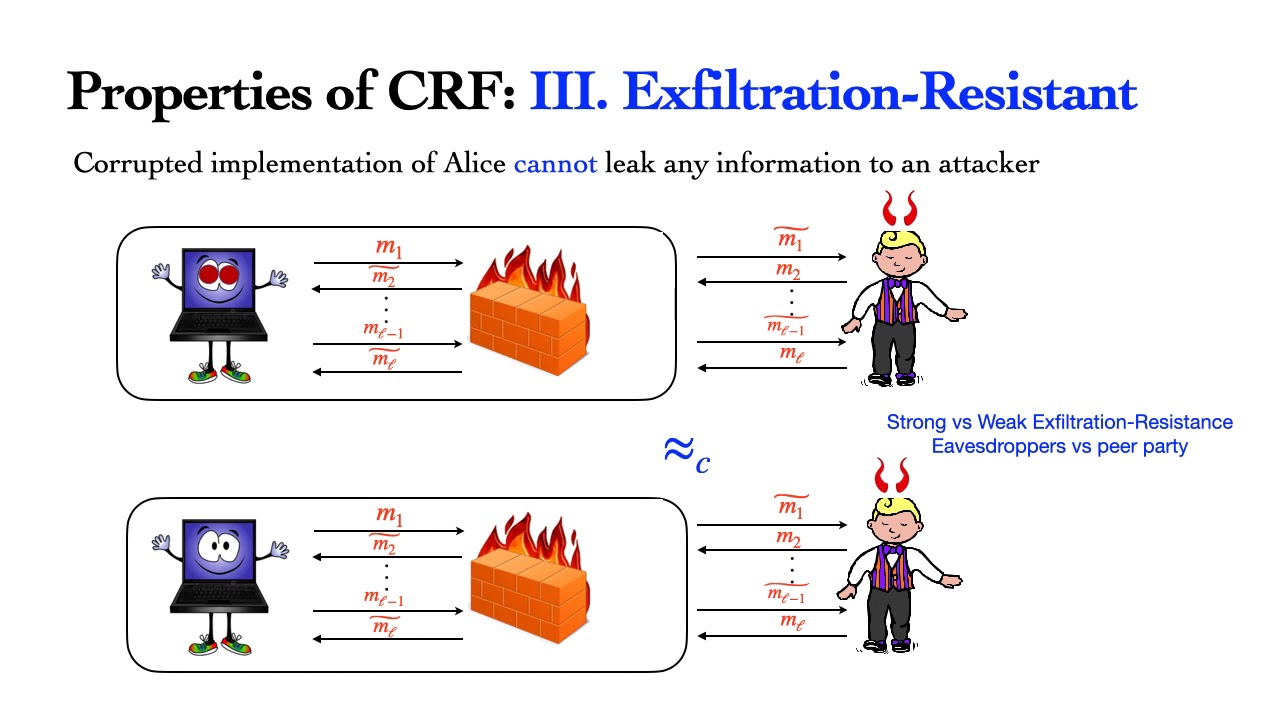Welcome to the resource topic for 2019/1317
Title:
Reverse Firewalls for Actively Secure MPCs
Authors: Suvradip Chakraborty, Stefan Dziembowski, Jesper Buus Nielsen
Abstract:Reverse firewalls were introduced at Eurocrypt 2015 by Mironov and Stephens-Davidowitz, as a method for protecting cryptographic protocols against attacks on the devices of the honest parties. In a nutshell: a reverse firewall is placed outside of a device and its goal is to sanitize'' the messages sent by it, in such a way that a malicious device cannot leak its secrets to the outside world. It is typically assumed that the cryptographic devices are attacked in a functionality-preserving way’’ (i.e. informally speaking, the functionality of the protocol remains unchanged under this attacks). In their paper, Mironov and Stephens-Davidowitz construct a protocol for passively-secure two-party computations with firewalls, leaving extension of this result to stronger models as an open question. In this paper, we address this problem by constructing a protocol for secure computation with firewalls that has two main advantages over the original protocol from Eurocrypt 2015. Firstly, it is a multiparty computation protocol (i.e. it works for an arbitrary number n of the parties, and not just for 2). Secondly, it is secure in much stronger corruption settings, namely in the actively corruption model. More precisely: we consider an adversary that can fully corrupt up to n-1 parties, while the remaining parties are corrupt in a functionality-preserving way. Our core techniques are: malleable commitments and malleable non-interactive zero-knowledge, which in particular allow us to create a novel protocol for multiparty augmented coin-tossing into the well with reverse firewalls (that is based on a protocol of Lindell from Crypto 2001).
ePrint: https://eprint.iacr.org/2019/1317
Talk: https://www.youtube.com/watch?v=OqAEaO2s2dk
See all topics related to this paper.
Feel free to post resources that are related to this paper below.
Example resources include: implementations, explanation materials, talks, slides, links to previous discussions on other websites.
For more information, see the rules for Resource Topics .
